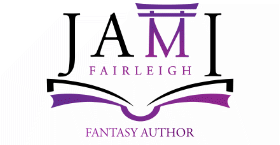
Book Review: The Crystal Cave by Mary Stewart

![]()
The Crystal Cave by Mary Stewart
Book Description
Born the bastard son of a Welsh princess, Myridden Emrys — or as he would later be known, Merlin — leads a perilous childhood, haunted by portents and visions. But destiny has great plans for this no-man’s-son, taking him from prophesying before the High King Vortigern to the crowning of Uther Pendragon… and the conception of Arthur — king for once and always.
Review
Diving back into The Crystal Cave by Mary Stewart was like sitting down for coffee with an old friend I hadn’t seen in years.
This book, the first of Stewart’s Arthurian Saga, is a fantastic retelling. It weaves together the rich threads of history and legend, painting a vivid picture of Britain on the brink of the Arthurian age.
I first read The Crystal Cave as a child. I remember getting sucked into the story, but not much else. Because my Elemental Artist series has an Arthurian theme running through it, I reread The Crystal Cave to prepare for revising my Ink and Waves manuscript.
Frankly, I expected the novel and it’s storytelling style to feel outdated. The original release was 1970, and literary times and trends have changed over the past fifty something years. But since I wanted to see how much of my work resonated with the Arthurian themes I remembered, the idea of reading a stale, old-fashioned fantasy novel did not bother me.
However, the story sucked me in and whisked me away with ferocity.
Stewart’s storytelling not only breathes life into this mythic era, but also underscores the relevance these stories have in exploring power, fate, and our interaction with the unseen forces that guide our lives today.
The Power of Origins
In The Crystal Cave, we meet a different Merlin from the venerable wizard cloaked in shadows of myth and magic. Instead, Stewart presents Merlin’s origin story.
The novel begins in his boyhood, which is marked by illegitimacy and exclusion. It shows his rise into a figure of immense wisdom and influence.
Told in a first person point of view, it’s a personal yet sprawling narrative. The story invites us into the inner workings of Merlin’s mind, his growing powers, and his predestined path towards the foundation of Camelot.
One aspect of The Crystal Cave that captivated me was Stewart’s fusion of the historical with the magical. Her version of Merlin is a man who employs logic as a tool as powerful as his magic. He uses his understanding of engineering, strategy, and the human psyche to shape the world around him.
Stewart’s approach demystifies the magic without devaluing it. I loved how she rooted Merlin’s feats in realism and intellect, which made him even more relatable.
The Crystal Cave stands as a testament to the power of writing a darned good story. No wonder it’s remained in print! If you haven’t read it, prepare yourself.
Stewart weaves history and myth into a narrative that is both thought-provoking and enthralling. It’s a journey worth embarking on, and a glorious reminder of the timeless magic well told Arthurian legends hold.
Content Warning
Blood, Death, Kidnapping, Murder, War
The header photo is a composite image. Base image by Jack B on Unsplash

